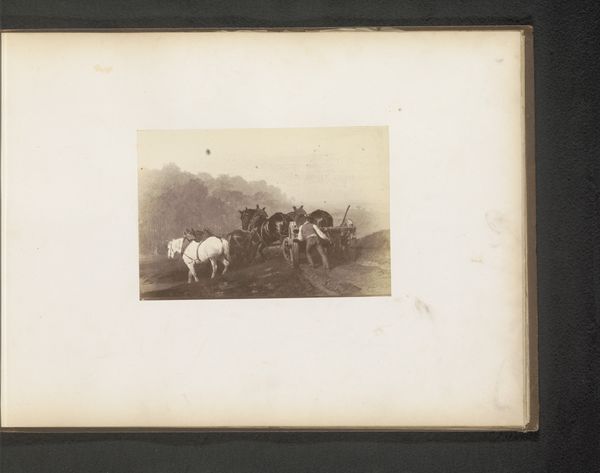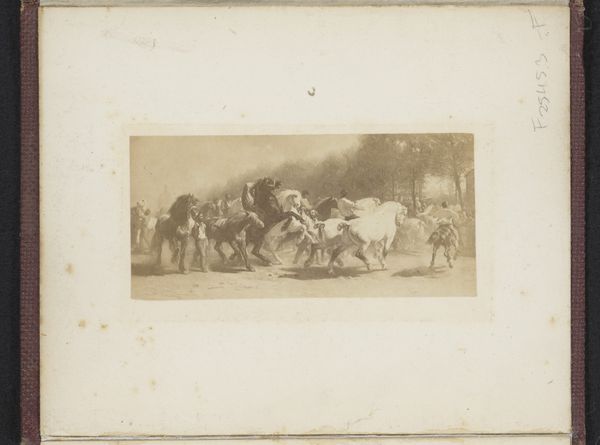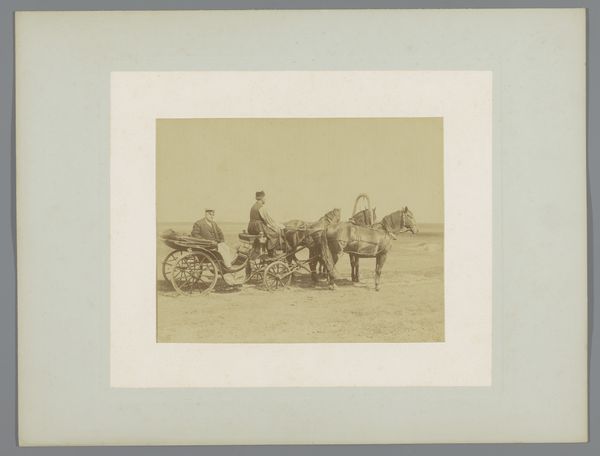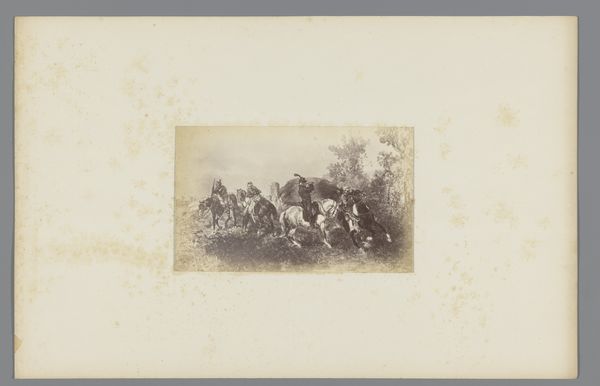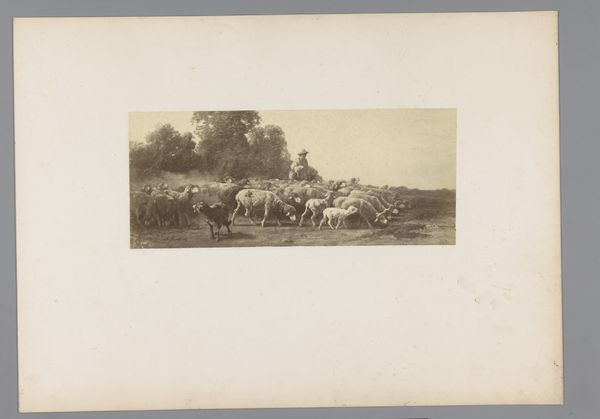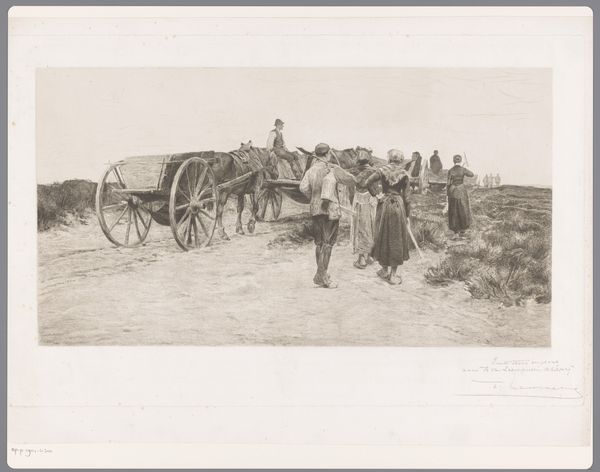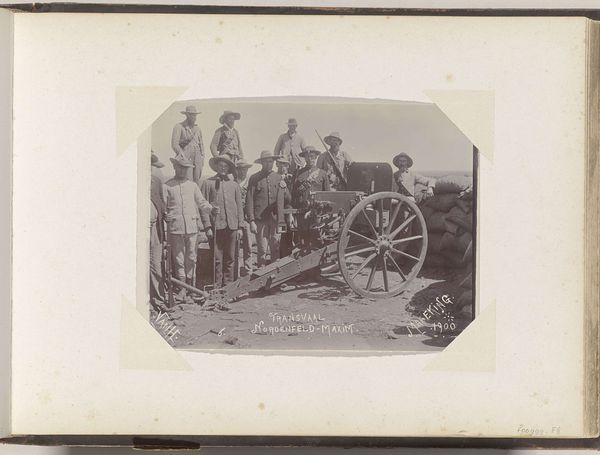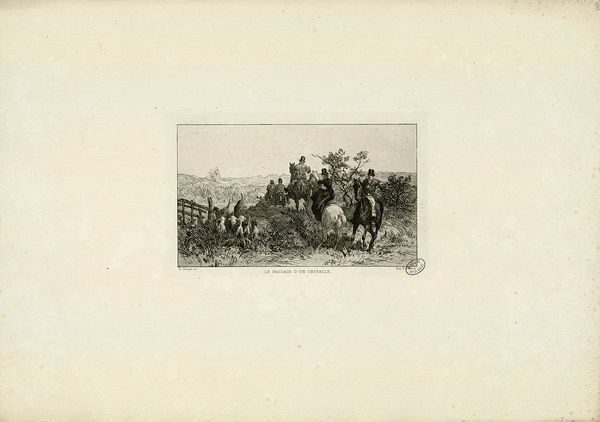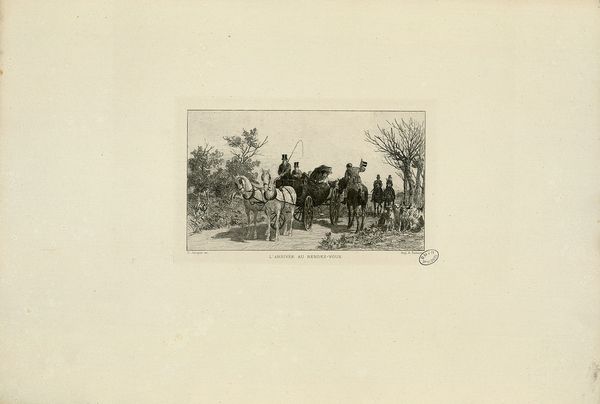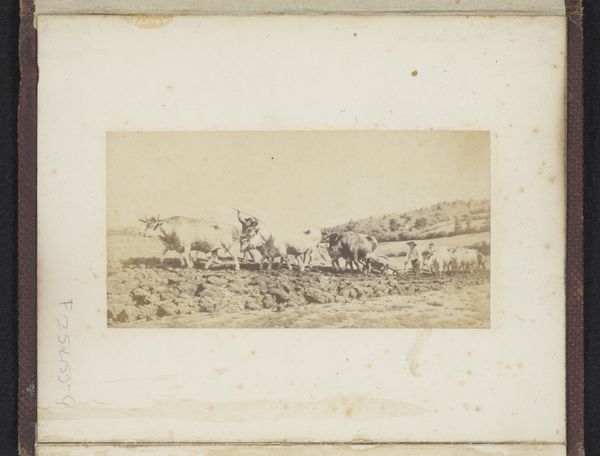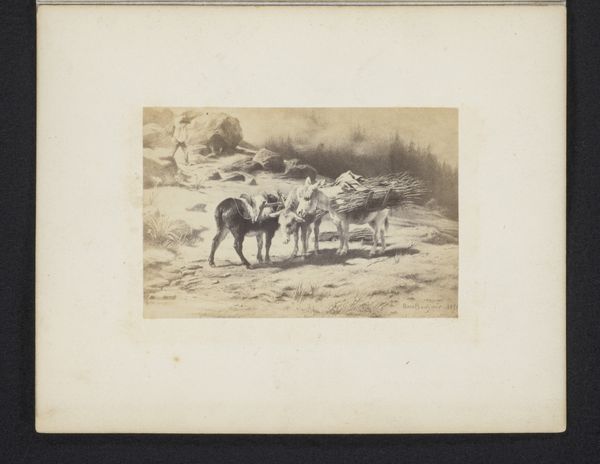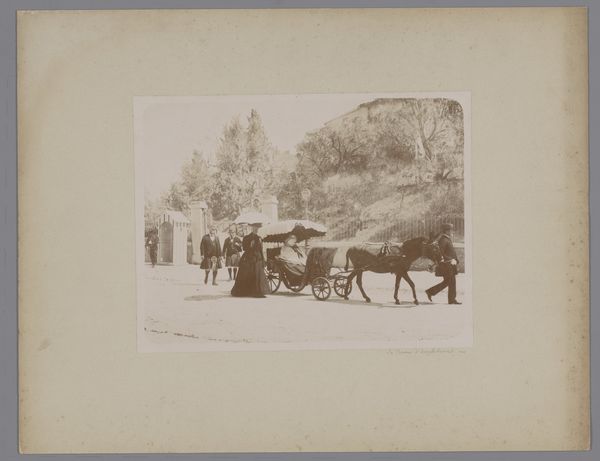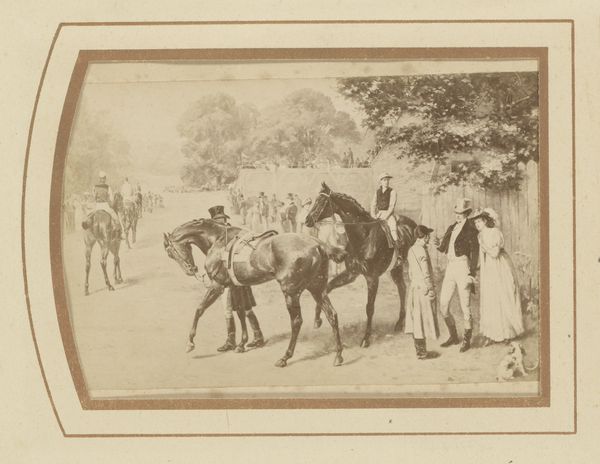
photography, gelatin-silver-print
#
landscape
#
photography
#
gelatin-silver-print
#
genre-painting
#
realism
Dimensions: height 50 mm, width 98 mm
Copyright: Rijks Museum: Open Domain
Curator: This is a photographic reproduction of Rosa Bonheur’s painting, "The Hay Wain," created sometime between 1890 and 1910 using the gelatin-silver process. Editor: My first impression is of a sun-drenched, rural scene rendered in tones of sepia. The details are soft, focusing my eye on the mass of hay and the powerful oxen. Curator: Bonheur was known for her Realist depictions of animals, and this work, even in its photographic reproduction, reveals so much about labor and the representation of rural life at the time. She gained acclaim during a period when ideas around women's roles in society were shifting dramatically. I think examining Bonheur’s oeuvre helps unpack narratives related to gender, labor, and class. Editor: Precisely, and considering the materiality—a gelatin-silver print meant for wider distribution—I am thinking about how Bonheur's vision of labor on the land transitions from singular artwork into an accessible commodity and then also a social document. It allows greater participation, and reveals hierarchies related to image making and consumption in the late 19th century. Curator: That is an important aspect—considering it was initially a painting before transitioning into this photographic format, the image’s audience undoubtedly changed. Editor: And consider the work of reproductive labor here as well; the animals are doing physical labor but there are layers of social implications too because they are also working in the reproduction. It raises interesting questions about commodification and what it means to represent working bodies in art. Curator: The layering of these concepts gives a modern understanding to Bonheur’s creation. Editor: Ultimately, by looking at this image's life through the lens of its production, we reveal how perceptions of nature, work, and representation converge within one artwork. Curator: I completely agree; contextualizing within historical and feminist theory helps us find these nuances in labor relations, class dynamics, and the changing social landscape of the late 19th and early 20th centuries.
Comments
No comments
Be the first to comment and join the conversation on the ultimate creative platform.
